Pocket K No. 32: Biotechnology for the Development of Drought Tolerant Crops
| |
Water and Agriculture
Adverse environmental factors, of which water scarcity represents the most severe constraint to agriculture, account for about 70 percent of potential yield loses worldwide1. Agriculture is the largest consumer of water in the world, and in the drier areas of the world, which include many developing countries, the use of water for agriculture can exceed 90 percent of consumption.
Global warming is also predicted to affect most severely developing countries, where agricultural systems are most vulnerable to climatic conditions and where small increases in temperature are very detrimental to productivity. The Food and Agricultural Organization of the United Nations2 estimates that by 2025 approximately 480 million people in Africa could be living in areas with very scarce water, and that as climatic conditions deteriorate, 600,000 square km currently classed as moderately constrained will become severely limited.
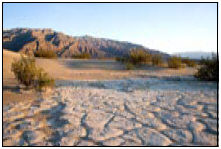 Water becomes an increasingly scarce and precious commodity. It is thus essential to improve water use efficiency in agriculture. This will require an integrated approach to water resources management to encourage an efficient and equitable use of the resource, and to ensure sustainability. The development of crop varieties with increased tolerance to drought, both by conventional breeding methods and by genetic engineering, is also an important strategy to meet global food demands with less water.
Water becomes an increasingly scarce and precious commodity. It is thus essential to improve water use efficiency in agriculture. This will require an integrated approach to water resources management to encourage an efficient and equitable use of the resource, and to ensure sustainability. The development of crop varieties with increased tolerance to drought, both by conventional breeding methods and by genetic engineering, is also an important strategy to meet global food demands with less water.
Developing Drought Tolerant Crops
Conventional breeding requires the identification of genetic variability to drought among crop varieties, or among sexually compatible species, and introducing this tolerance into lines with suitable agronomic characteristics. Although conventional breeding for drought tolerance has and continues to have some success, it is a slow process that is limited by the availability of suitable genes for breeding. Some examples of conventional breeding programs for drought tolerance are the development of rice, wheat and Indian mustard varieties tolerant to salt and to alkali soils by the Central Soil Salinity Research Institute in Karnal, India3; the development of maize hybrids with increased drought tolerance4; efforts to incorporate salt tolerance to wheat from wild related species5; and the incorporation of drought tolerance as a selection trait in the generation of new maize and wheat germplasm by the International Maize and Wheat Improvement Center6.
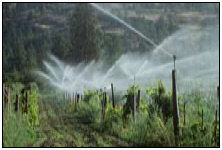 The development of tolerant crops by genetic engineering, on the other hand, requires the identification of key genetic determinants underlying stress tolerance in plants, and introducing these genes into crops. Drought triggers a wide array of physiological responses in plants, and affects the activity of a large number of genes: gene expression experiments have identified several hundred genes which are either induced or repressed during drought7.
The development of tolerant crops by genetic engineering, on the other hand, requires the identification of key genetic determinants underlying stress tolerance in plants, and introducing these genes into crops. Drought triggers a wide array of physiological responses in plants, and affects the activity of a large number of genes: gene expression experiments have identified several hundred genes which are either induced or repressed during drought7.
Plant Drought Tolerance Mechanisms
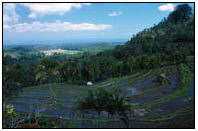 Plants respond to their changing environment in a complex, integrated way that allows them to react to the specific set of conditions and constraints present at a given time. Therefore, the genetic control of tolerance to abiotic stresses is not only very complex, but is also highly influenced by other environmental factors and by the developmental stage of the plant.
Plants respond to their changing environment in a complex, integrated way that allows them to react to the specific set of conditions and constraints present at a given time. Therefore, the genetic control of tolerance to abiotic stresses is not only very complex, but is also highly influenced by other environmental factors and by the developmental stage of the plant.
The physiological responses of plants to a deficit of water include leaf wilting, a reduction in leaf area, leaf abscission, and the stimulation of root growth by directing nutrients to the underground parts of the plants. Plants are more susceptible to drought during flowering and seed development (the reproductive stages), as plant’s resources are deviated to support root growth. In addition, abscisic acid (ABA), a plant stress hormone, induces the closure of leaf stomata (microscopic pores involved in gas exchange), thereby reducing water loss through transpiration, and decreasing the rate of photosynthesis. These responses improve the water-use efficiency of the plant on the short term.
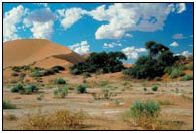 Plant cells are required to maintain water balance. To mantain this water balance, plants absorb water when water potential is negative Cells can decrease their water potential through the accumulation of solutes, such as sugars, amino acids, organic acids and ions – especially potassium (K+). As cellular enzymes are severely inhibited by the presence of ions, these must be removed from the cytosol (the ground fluid substance of the cell) and stored in special storage cell organelles, the vacuoles. Compatible solutes that accumulate in the cytosol and do not interfere with enzymatic reactions comprise sugar alcohols (mannitol and sorbitol), the amino acid proline, and glycine betaine. The synthesis of these compounds by the plant enhances tolerance to drought8.
Plant cells are required to maintain water balance. To mantain this water balance, plants absorb water when water potential is negative Cells can decrease their water potential through the accumulation of solutes, such as sugars, amino acids, organic acids and ions – especially potassium (K+). As cellular enzymes are severely inhibited by the presence of ions, these must be removed from the cytosol (the ground fluid substance of the cell) and stored in special storage cell organelles, the vacuoles. Compatible solutes that accumulate in the cytosol and do not interfere with enzymatic reactions comprise sugar alcohols (mannitol and sorbitol), the amino acid proline, and glycine betaine. The synthesis of these compounds by the plant enhances tolerance to drought8.
The plant’s response to drought is accompanied by the activation of genes involved in the perception of drought stress and in the transmission of the stress signal. One group are genes that encode proteins that protect the cells from the effects of desiccation9. These genes include those that govern the: accumulation of compatible solutes; passive transport across membranes; energy-requiring water transport systems; and protection and stabilization of cell structures from desiccation and damage by reactive oxygen species9.
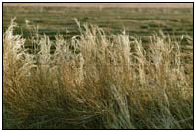 A second group of genes activated by drought is comprised by regulatory proteins that further regulate the transduction of the stress signal and modulate gene expression. At least four independent stress-responsive genetic regulatory pathways are known to exist in plants, forming a highly complex and redundant gene network8, 9. Two of the pathways are dependent on the hormone ABA, and two are ABA-independent. These pathways are also implicated in the perception and response to additional stress factors, including cold, high temperature and salinity.
A second group of genes activated by drought is comprised by regulatory proteins that further regulate the transduction of the stress signal and modulate gene expression. At least four independent stress-responsive genetic regulatory pathways are known to exist in plants, forming a highly complex and redundant gene network8, 9. Two of the pathways are dependent on the hormone ABA, and two are ABA-independent. These pathways are also implicated in the perception and response to additional stress factors, including cold, high temperature and salinity.
Genetic Engineering Drought Tolerant Plants
Although not a crop plant, Arabidopsis has played a vital role in the elucidation of the basic processes underlying stress tolerance, and the knowledge obtained has been transferred to a certain degree to important food plants10. Many of the genes known to be involved in stress tolerance have been isolated initially in Arabidopsis. The introduction of several stress-inducible genes into plants by genetic engineering has resulted to increased tolerance of transgenics to drought, cold and salinity stresses8, 9. Some examples are reviewed in the following section.
Genetic manipulation of the stress response to abscisic acid (ABA)
ABA levels in the plant greatly increase in response to water stress, resulting in the closure of stomata thereby reducing the level of water loss through transpiration from leaves and activate stress response genes. The reaction is reversible: once water becomes available again, the level of ABA drops, and stomata re-opens. Increasing the plant’s sensitivity to ABA has therefore been a very important target for improving drought tolerance.
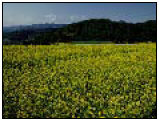 ERA1, a gene identified in Arabidopsis, encodes the ß-subunit of a farnesyl-transferase, and is involved in ABA signaling. Plants lacking ERA1 activity have increased tolerance to drought, however are also severely compromised in yield. In order to have a conditional, reversible down-regulation of ABA, a group of Canadian researchers used a drought-inducible promoter to drive the antisense expression of ERA1, in both Arabidopsis and canola plants11. Transgenic plants performed significantly better under water stress, with consistently higher yields over conventional varieties. Importantly, there was no difference in performance between transgenic and controls in conditions of sufficient water, demonstrating that the technology has no yield-drag11. Multi-location trials have confirmed yield increases due to enhanced protection to drought to be 15-25 percent compared to non-transgenic controls (http://www.performanceplants.com).
ERA1, a gene identified in Arabidopsis, encodes the ß-subunit of a farnesyl-transferase, and is involved in ABA signaling. Plants lacking ERA1 activity have increased tolerance to drought, however are also severely compromised in yield. In order to have a conditional, reversible down-regulation of ABA, a group of Canadian researchers used a drought-inducible promoter to drive the antisense expression of ERA1, in both Arabidopsis and canola plants11. Transgenic plants performed significantly better under water stress, with consistently higher yields over conventional varieties. Importantly, there was no difference in performance between transgenic and controls in conditions of sufficient water, demonstrating that the technology has no yield-drag11. Multi-location trials have confirmed yield increases due to enhanced protection to drought to be 15-25 percent compared to non-transgenic controls (http://www.performanceplants.com).
Performance Plants Inc, a Canadian plant biotechnology company, is developing the technology for commercialization, under the name Yield Protection Technology™ (YPT™). YPT™ is also being developed for maize, soybean, cotton, ornamentals and turf grass to be available to farmers in early 2011.
ABA-independent gene regulation to drought stress
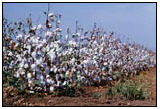 The transcription factors DREB1 and DREB2, are important in the ABA-independent drought tolerant pathways, that induce the expression of stress response genes. Over-expression of the native form of DREB1, and of a constitutively active form of DREB2, increases the tolerance of transgenic Arabidopsis plants to drought, high salinity and cold. Although these genes were initially identified in Arabidopsis plants, their presence and role in stress tolerance have been reported in many other important crops, such as rice, tomato, barley, canola, maize, soybean, rye, wheat and maize, indicating that this is a conserved, universal stress defense mechanism in plants9. This functional conservation makes the DREB genes important targets for crop improvement for drought tolerance through genetic engineering.
The transcription factors DREB1 and DREB2, are important in the ABA-independent drought tolerant pathways, that induce the expression of stress response genes. Over-expression of the native form of DREB1, and of a constitutively active form of DREB2, increases the tolerance of transgenic Arabidopsis plants to drought, high salinity and cold. Although these genes were initially identified in Arabidopsis plants, their presence and role in stress tolerance have been reported in many other important crops, such as rice, tomato, barley, canola, maize, soybean, rye, wheat and maize, indicating that this is a conserved, universal stress defense mechanism in plants9. This functional conservation makes the DREB genes important targets for crop improvement for drought tolerance through genetic engineering.
Conclusion
Although significant progress has been made in elucidating the genetic mechanisms underlying drought tolerance, considerable challenges remain. In field conditions, crops are subjected to variable levels of multiple stresses, thus one area of studies that deserves much more attention is the response of plants to a combination of stresses. There, plant’s response to multiple stresses cannot be inferred from the response to individual stress12. It is thus essential to test newly developed varieties to multiple stresses, and to carry out extensive field studies in a large range of conditions that assess tolerance as absolute yield increases.
Another major challenge is the increasing difficulty and expense in obtaining approvals for field trials of GM plants. As a number of measures are in place to ensure the safe and responsible design of field tests, excessive precaution should not become a barrier to making sure we use all the tools available to us for a more sustainable agriculture.
| |
References:
- Boyer J. S. (1982). Science 218: 443-448.
- FAO (2007). http://www.fao.org/newsroom/en/news/2007/1000654/index.html
- CSSRI (2001). http://plantstress.com/files/salt_karnal.htm
- Bruce W. B. et al. (2002). J. Exp. Bot. 53: 13-25.
- Colmer T. D et al.. (2006). J. Exp. Bot. 57: 1059-1078.
- Ribaut J-M. & Poland D. (2004). http://www.cimmyt.org/english/docs/proceedings/molecApproaches/pdfs/MolecularApproaches.p
- Sahi C. et al. (2006). Physiologia Plantarum 127: 1-9.
- Umezawa et al. (2006). Curr. Op. Biotech.17: 113-122.
- Shinozaki K. and Yamaguchi-Shinozaki K. (2007). J. Exp. Bot. 58: 221-227.
- Zhang J. Z. et al. (2004). Plant Physiol. 135: 615-621.
- Wang et al. (2005). Plant J 43: 413-424.
- Mittler R. (2006). Trends Plant Sci. 11: 15-19.
*March 2008
